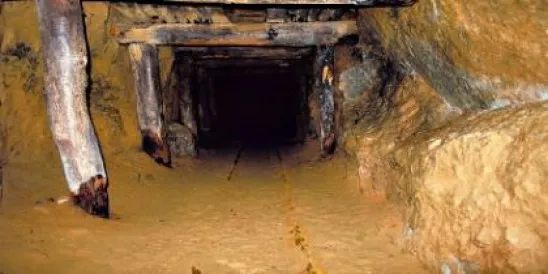ARLINGTON, Va. — The U.S. Department of Labor's Mine Safety and Health Administration today announced that S&M Coal Co. has completed installation of a communications and tracking system at Buck Mountain Slope near Lykens, Pa., ending its two-year refusal to comply with requirements mandated in the Mine Improvement and New Emergency Response Act of 2006.
According to the MINER Act, each underground coal mine operator was required to submit an emergency response plan by June 15, 2009, that provided for post-accident communications between underground and surface personnel via a wireless two-way medium, as well as an electronic tracking system permitting surface personnel to determine the location of any people trapped underground.
"The ability to communicate with miners underground and track their whereabouts is a key component during a rescue operation," said Joseph A. Main, assistant secretary of labor for mine safety and health. "This technology, when properly implemented, will go a long way in giving miners the best possible chance for survival in the event of a mine emergency."
A number of anthracite mine operators expressed concerns that radio emissions from these systems might interfere with blasting detonators used to extract coal underground. Consequently, MSHA coordinated with companies that developed communications and tracking systems, and tested one of the systems near blasting circuits at the 7 Ft. Slope Mine in New Philadelphia, Pa. The results demonstrated that radio frequency interference levels associated with available systems would not result in unintended detonation.
After receiving these results, most of the anthracite mine operators still refused to submit emergency response plans that provided for mandated communications and tracking systems. Consequently, each of those operators received a citation for violating the MINER Act requirement. The contested citations were upheld in separate proceedings by administrative law judges with the Federal Mine Safety and Health Review Commission, who found that electronic tracking and two-way communication systems are safe and effective for use in underground anthracite mines and ordered that emergency response plans be submitted for approval by MSHA's district manager. Following the administrative law judges' decisions, several of the operators worked with MSHA's district office in Wilkes-Barre, Pa., to develop emergency response plans that specified the use of congressionally-mandated communications and tracking systems, and the district manager approved their revised plans.
However, S&M Coal Co. continued to conduct mining operations without submitting a compliant emergency response plan, prompting MSHA to file a lawsuit against the mine on April 21 in the U.S. District Court for the Middle District Court of Pennsylvania to ask for preliminary and permanent injunctions against S&M. The judge granted MSHA's motion for a preliminary injunction on July 6 and, although the agency's request for a permanent injunction remains pending, S&M has agreed to install the communications and tracking system, making it the last anthracite mine operator to do so.



 />i
/>i
